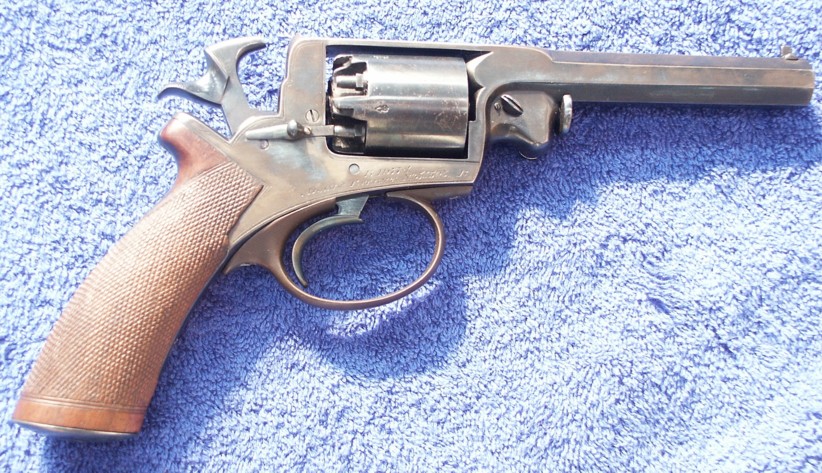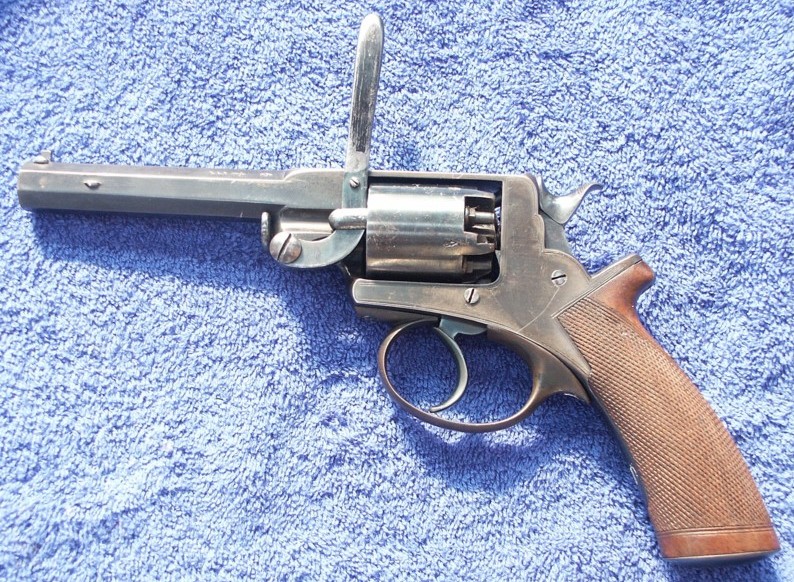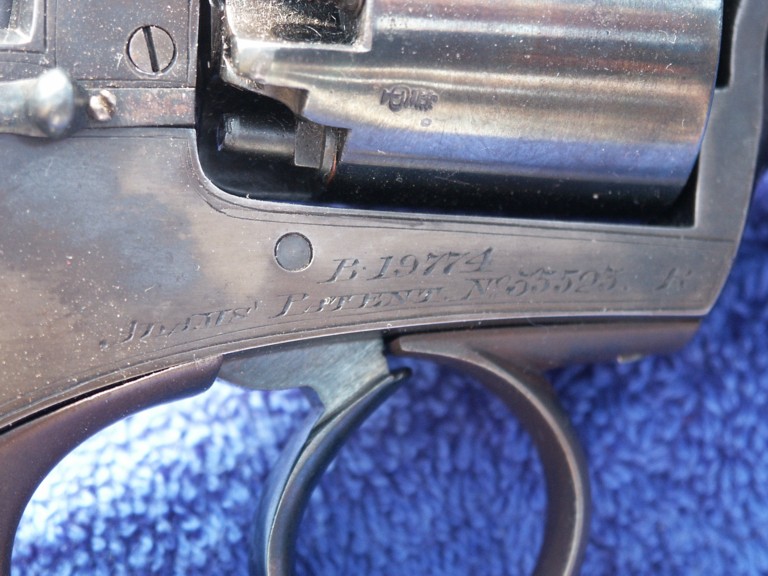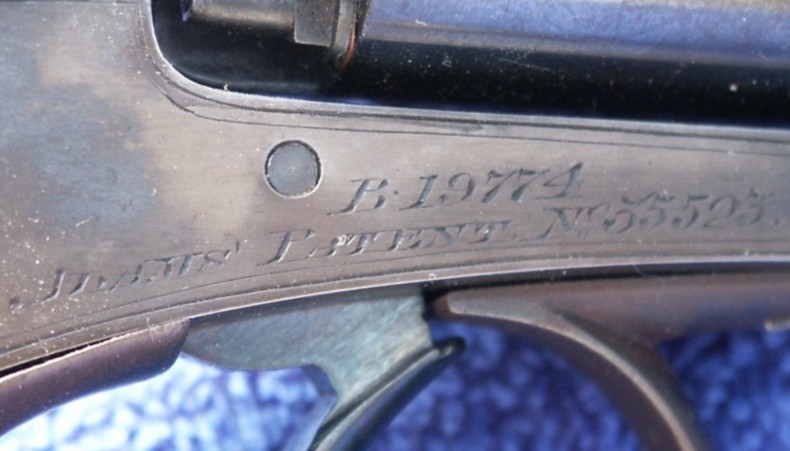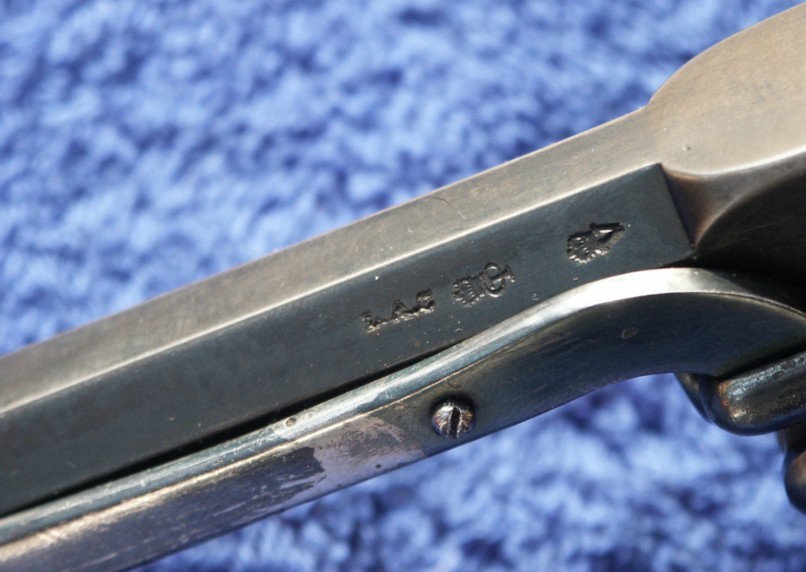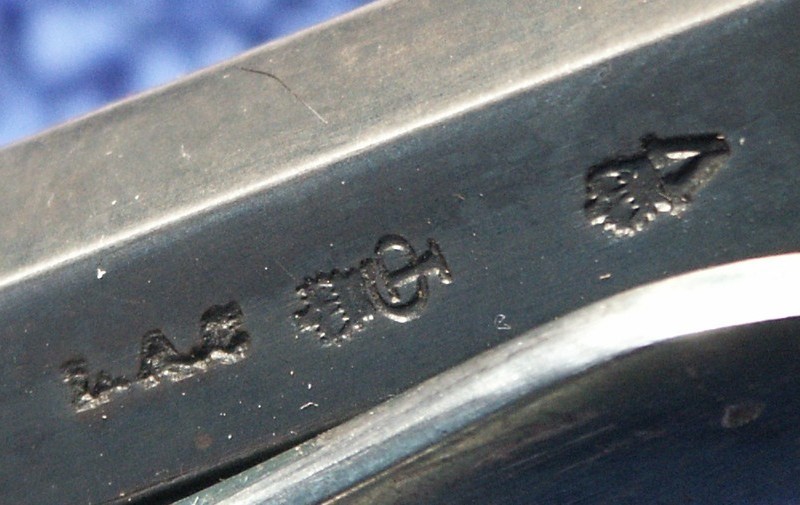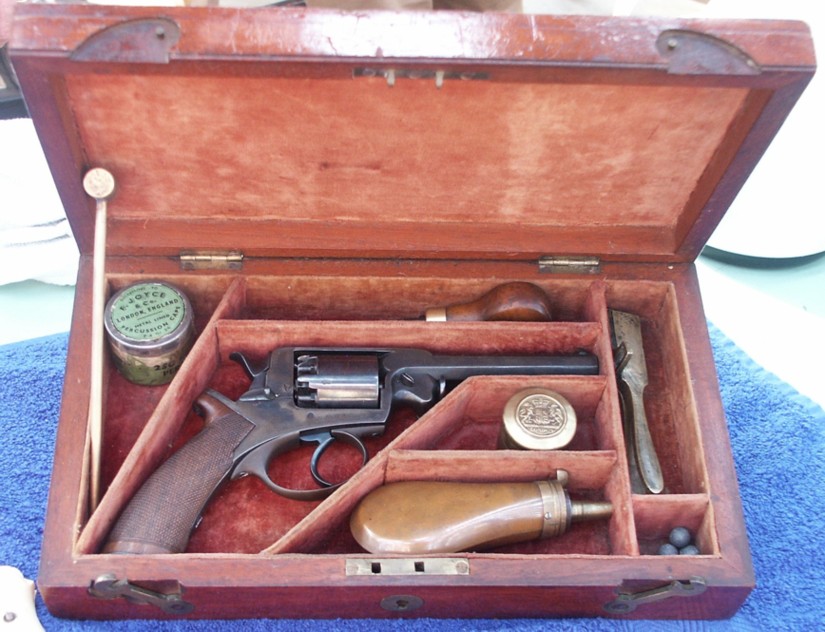
BEAUMONT-ADAMS
THE BRITISH BEAUMONT-ADAMS REVOLVER
One of Colt's most serious challengers on the field of gun sales in the 1850's was undoubtedly the London gunmaker, Robert Adams. In 1851, Adams invented and patented a 5-shot percussion revolver, with solid frame and double-action only.
The first Adams revolvers had no attached loading lever, so the shooter had to seat the bullets home in the chambers with the thumb.
In February, 1855, Lieutenant Frederic Beaumont of the Royal Engineer's Rgt, was granted a patent for an improvement on the Adams mechanism, which allowed the single-action mode.
Although Adams had already added an attached loading lever as from 1853, another famous London gunmaker, James Kerr, developed and patented in 1855 a better loading lever for the same weapon, which was attached to the left side of the frame.
These improved Adams revolvers meant a commercial defeat for Colt on the British market as early as 1857, and are now known among collectors under the name Beaumont-Adams.
Many Adams revolvers were distributed by the London Company Deane, Adams & Deane. Adams quit the company in 1856, and the firm was reorganized and renamed as the famous London Armoury Company. The company manufactured the Adams and Kerr revolvers, as well as the Enfield rifles on behalf of the British Government.
As already said, a number of these weapons were also delivered to the Confederacy during the American Civil War.
The Beaumont-Adams and Adams revolvers are all 5-shooters and were manufactured in three basic calibers, being the .479 (38 bore), .442 (54 bore), and .338(120 bore). The gun presented here is in the .338 caliber. About 19,000 Beaumont-Adams revolvers were manufactured at London between 1855 and 1867, on a total of 25,000.
The three associates were also granted patents in the US for their inventions.
In 1856, a British Major named Ripley made an agreement with the US Ordnance Department for the delivery of 100 Adams revolvers. As the Americans demanded the guns to be made in the .36 caliber, which was common there, it took the LAC several months to fulfill the order.
Part of these revolvers was given to the H Company of the 1st Cavalry Rgt, under command of Lt Eli Long; they proved their accuracy in a rather important skirmish against Cheyenne Indians, who were defeated although they outnumbered the US soldiers.
Later on, Ripley agreed with the US government on a new delivery of 500 revolvers, which were to be manufactured in the US by the Massachusetts Arms Co.
The revolvers manufactured by the Mass Arms Co differ from the British ones by the caliber: while the British ones are in the .338 caliber and bear only Adams' name and patent number besides the London proofmarks, those manufactured in the US are in the .36 caliber and show on top of the barrel Beaumont's name and patent number, and Kerr's name and patent on the loading lever.
Just before the Civil War broke out, the Union army purchased 600 Beaumont-Adams revolvers (of which the 500 made in the US). During the war, they are reported to have purchased 1,075 more, making a total of 1,675.
More than certainly, the Confederate Government also purchased some, but the exact number is totally unknown.
On this weapon, the serial number is found on the right side of the frame, under the cylinder, preceded by the mention "Adams Patent" and followed by the suffix R. This suffix R confirms that the weapon was manufactured in the LAC shops. Those manufactured by Pryse & Redman of Birmingham have a suffix P, and those produced by Calisher & Terry bear the suffix C.
Above this serial number there is another one, with a B as prefix. This additional serial number was used for control of the payment of royalties to Frederic Beaumont. Since the Beaumont patent expired on February 20th, 1862, one can conclude that all weapons showing twin serial numbers were manufactured before that date."
Marcel


